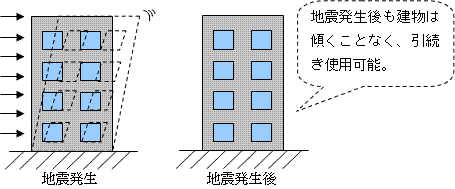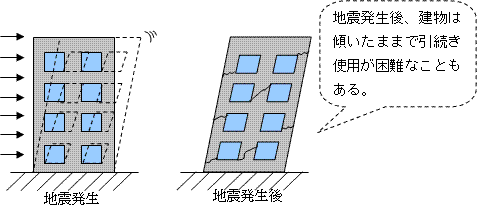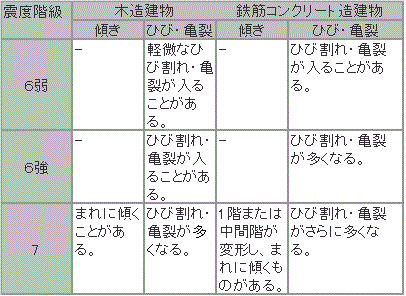Here's the text.
Relationship between buildings and earthquakes
Last Updated October 29, 2018
Since the Great East Japan Earthquake, citizens have been interested in earthquakes, and there have been many inquiries about earthquakes, such as "How much earthquake can my home withstand?" In response to such inquiries, here we will explain what the building is doing to ensure structural safety. The explanation here is for buildings that have started construction after the enforcement of the new seismic standards.
※The Building Standards Law was revised on June 1, 1981, and the seismic standards have changed. This new standard is called the new earthquake resistance standard. Buildings that started construction on or after June 1, 1981 are considered to be buildings designed according to this new seismic standard. The new seismic standard is based on the concept of the secondary design described below is newly introduced, and it is a standard that assumes large-scale earthquakes in addition to medium-scale earthquakes. In addition, technically, regulations on seismic force and the amount of walls in wooden buildings have been strengthened.
What is the structure of the building against earthquakes?
The structure of the building is divided into the following two stages, and we are considering that it is safe against earthquakes.
Primary design
The design aims to minimize damage to structures such as columns and beams, in the event of a medium-scale earthquake that is encountered several times during the useful life of the building.
The goal of this design is to secure human life and to continue using the building.
Secondary design
The design aims to prevent collapse or collapse even if the building is damaged in the event of a large-scale earthquake that occurs once during the useful life of the building, it does not collapse or collapse.
This design is intended only to secure human life, and the building may be damaged, tilted, and cannot be used. This is an idea that was introduced in the new seismic standards.
What are medium-sized earthquakes and large-scale earthquakes?
As mentioned above, the structure of the building is being examined for medium-sized and large-scale earthquakes. It is assumed that a medium-sized earthquake is about 5 or more, and a large-scale earthquake is an earthquake with a seismic intensity of about 6 to 7.
However, the Building Standards Law does not specify the relationship between the seismic intensity and the magnitude of earthquakes, such as "medium-scale earthquakes are earthquakes with seismic intensity 5 or more and large-scale earthquakes with seismic intensity 6 to 7). Therefore, it is not possible to clearly state how much earthquake a building built in accordance with the Building Standards Law can withstand, past earthquake data and research have used it as a guide.
What was the damage to the building that actually suffered from the earthquake?
Based on the damage caused by the recent earthquake, the expected damage situation of the building is divided into wooden and reinforced concrete buildings and divided into wooden buildings. However, even if the seismic intensity is the same, the damage situation varies depending on the structure of the building and the ground where the building is built. Not all the damage described in this table will occur, and depending on the condition of the building, the damage may increase or decrease.

(Reference: Meteorological Agency's seismic intensity class description table)
Wooden cracks and cracks are earthen walls (battered bamboo base) and mortar finishing
Cracks and cracks on walls (including rus and wire mesh base) are assumed.
For inquiries to this page
Building Guidance Division, Housing and Architecture Bureau Building Guidance Division
Phone: 045-671-4531
Phone: 045-671-4531
Fax: 045-681-2437
Email address: kc-shidotanto@city.yokohama.jp
Page ID: 652-100-846







